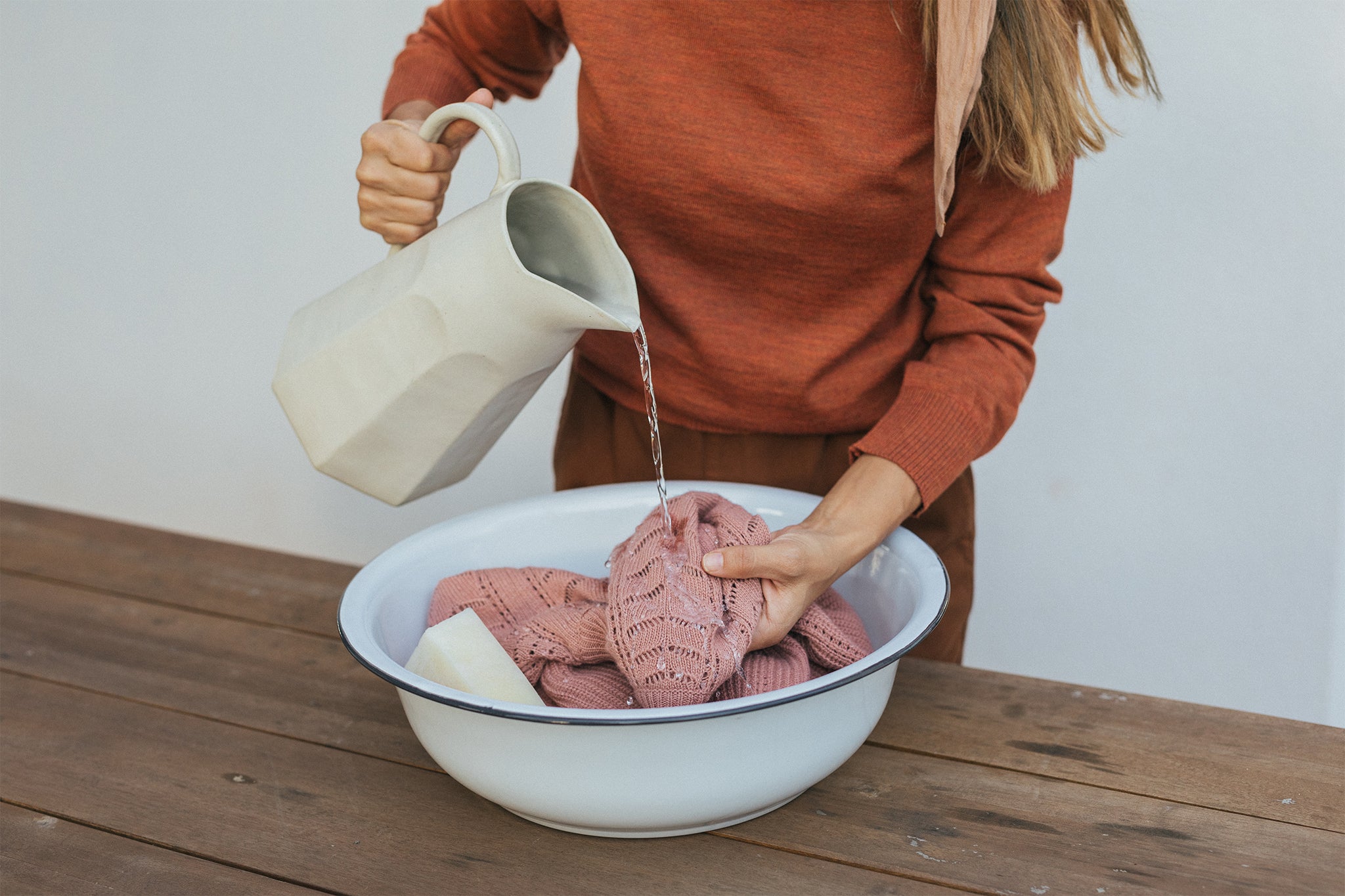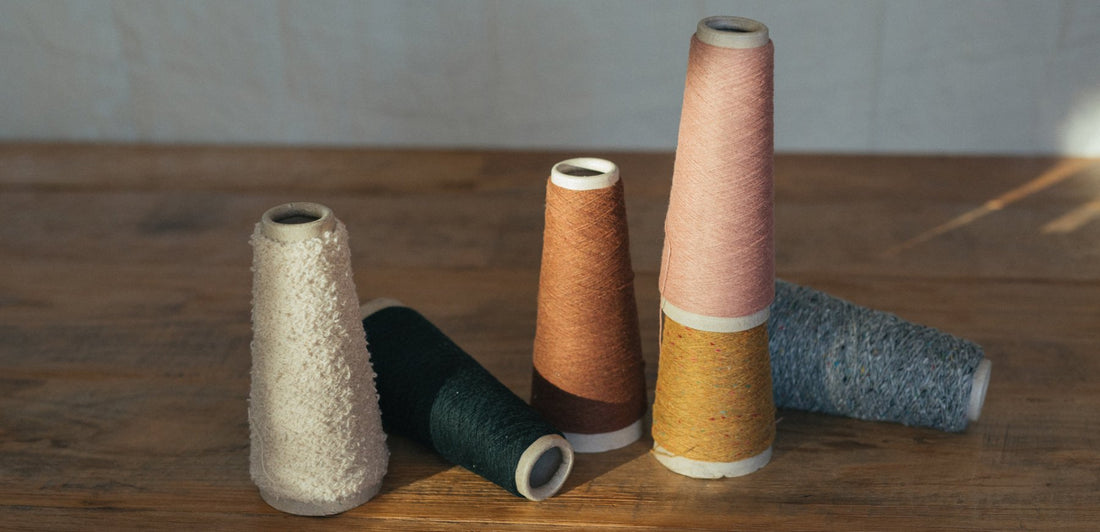The best knits collect memories, not dust. Whether you wear them year-round, or store them away for the colder months - there’s something about these garments that tingles with nostalgia. They’re the ideal investment piece: in it for the long run, there for you forever - or so you thought. Without the proper attention, all this could unravel a few years down the line.
We know you’ll want your TWOTHIRDS knits to have a long and wonderful life, which is why we’ve put together a wool care guide. This amazing material has lots going for it, being one of nature’s toughest and warmest fabrics. Here’s what we recommend:


BEFORE WASHING
Know your garment: being familiar with wool’s properties will change the way you care for it. A naturally breathable fabric that wicks away moisture - wool really doesn’t need to be washed as often as other fibres. In fact, leaving bigger gaps between loads is an important care tactic that preserves wool’s strength and saves on CO2. According to Fashion Revolution, 25% of a garment’s carbon footprint occurs at the care stage! They hold “overwashing” responsible.
Air your concerns: to keep your knit fresh in the meantime, give the garment a breather. Laying it flat on a chair or on a rack outside, away from direct sunlight, will suit wool’s breathable structure and freshen the scent. Be careful not to leave overnight in winter months.
Spot clean: in combination with air drying, to avoid the need to wash. Use a brush or a cloth and work stains gently off the garment, but don’t rub or agitate the fabric.
Steam: treat your knit to the occasional spa session. This will help straighten out wrinkles and relax the fibres so that the garment returns to its original form. To take an eco-friendly approach, lay it flat in the bathroom while (or after) you take a shower.


WASHING
Wash by hand: Saving water and further CO2 - hand washing is great for wool garments and will make sure they don’t shrink. Always turn the knit inside out first, and use a dedicated wool detergent, as standard solutions contain enzymes that can destroy wool. Place in a bowl, bucket or bath, with lukewarm water and just a teaspoon of liquid. Swirl the knit around gently and allow it to soak for a maximum of 5 minutes. Then transfer the knit to another bowl of water to rinse, but don’t wring or squeeze the fabric tightly, as this could pull it out of shape.
If you do need to use a washing machine, opt for the wool or “delicates” cycle. Your knit will wash well at 30 degrees or even cold.

DRYING
Never hang up: There’s a reason the expression “hung out to dry” also means “abandoned”. To keep your knitwear in shape, avoid washing lines. Hanging them up will stretch the fabric due to the extra weight of water, so always dry them flat instead. There’s a trick to this: press the excess water out and lay the garment onto a cloth. Roll them up together, press down and feel the water seep into the cloth. Unroll, before leaving the knit to dry on a rack or a towel.
BRUSHING + PILLING
Give it a dust down: Over time, you may notice tiny snowballs forming on top of the knit’s fabric, at the seams or underarms where friction is greatest. Pilling, as it’s otherwise known, is fairly common for wool. But it’s easy to treat - by using a specialised wool brush that also removes hidden dust or dirt and leaves your knits looking as fresh as the day they were made.

STORING
Bring folding into fashion: This is not the time for origami, but it will help to become an expert folder, doing so in a way that suits each garment’s unique shape. This is the best storage method because hanging will always result in some stretch.
For the warmer seasons: fold up and store in a cotton or linen bag, instead of vacuum plastic, as you’ll want the garment to breathe a little. These materials are also far better for the environment.
For the moths: did you know that, like bees, moths are important pollinators? They also have a taste for sweaters. To keep the insects in their natural habitat, use the age-old trick of placing a block of cedarwood or oil wherever you store your knits. The scent repels moths and leaves your clothes with a forest-fresh aroma.
THE LONG VIEW
Be prepared to love your knit for a long time. It is said that the most eco-friendly clothing creates “emotional durability” - because we’re less likely to throw away garments when they mean something to us. The most valuable piece of care advice is therefore the most simple: to care. Invest emotionally in your clothing and it will last you a lifetime.








